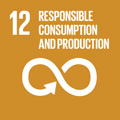- Docente: Alessandro Morri
- Credits: 6
- SSD: ING-IND/21
- Language: Italian
- Teaching Mode: In-person learning (entirely or partially)
- Campus: Bologna
- Corso: Second cycle degree programme (LM) in Industrial Chemistry (cod. 0884)
Learning outcomes
At the end of the course, the student gains knowledge about: a) effect of chemical composition and microstructure on mechanical properties of light alloys; b) manufacturing processes and heat treatments for obtaining appropriate microstructures with high performances; c) physical, chemical and mechanical properties of light metals.
Moreover the student will be able to define the most appropriate alloys, manufacturing processes and heat treatments for the production of different industrial components.Course contents
Prerequisites
Basic principles of metal science.
Introduction
Basics on metal alloys: phase diagrams, microstructure, solidification, plastic deformation, strengthening mechanisms.
Mechanical properties: hardness, tensile, fatigue, impact and creep tests.
Aluminium alloys
Extraction processes, mechanical, physical, chemical properties, designation system.
Wrought and casting alloys: effect of alloying elements on microstructure, technological and mechanical properties of the alloys.
Casting, welding and plastic deformation processes.
Heat treatments: effects on microstructure and mechanical properties. Definition of optimal heat treatment parameters.
Aluminium alloys applications
Titanium alloys
Extraction processes, mechanical, physical, chemical properties, designation system.
alfa, alfa+beta and beta titanium alloys: effects of alloying elements, thermomechanical processing and heat treatments (Mill annealing, Recrystallization annealing, β annealing and Duplex annealing) on microstructure and mechanical properties.
Titanium alloys applications.
Laboratory
Methods for chemical, fractographic and microstructural characterization of light alloys.
Readings/Bibliography
Materials Science and Engineering: An Introduction. William D. Callister, Jr, David G. Rethwisch. 2010 John Wiley & Sons
Light Alloys 4th Edition. I. Polmear. Butterworth-Heinemann - 2005.
Titanium. G. Luetjering, J.C. Williams. Springer - 2003.
ASM Handbook, Volume 2 - Properties and Selection: Nonferrous Alloys and Special-Purpose Materials
Teaching methods
Class or on-line lectures according to the timetable and laboratory
Assessment methods
The final examination consists of a written test (45 minutes) on the EOL web site and an oral examination aiming at assessing if the student learned how (i) to select light alloys and treatments for producing mechanical components that work in a given service condition and how (ii) to identify the reasons for malfunctioning related to material features.
The final examination could be modified in an on-line examination if the COVID-19 pandemic made it necessary.
Teaching tools
PC and projector, blackboard. Teaching lab (equipment for metallographic preparation; optical and stereo microscopy with image analyser; hardness testers; tensile tester).
Teaching material will be available on-line ion the website VIRTUALE
Office hours
See the website of Alessandro Morri
SDGs




This teaching activity contributes to the achievement of the Sustainable Development Goals of the UN 2030 Agenda.
